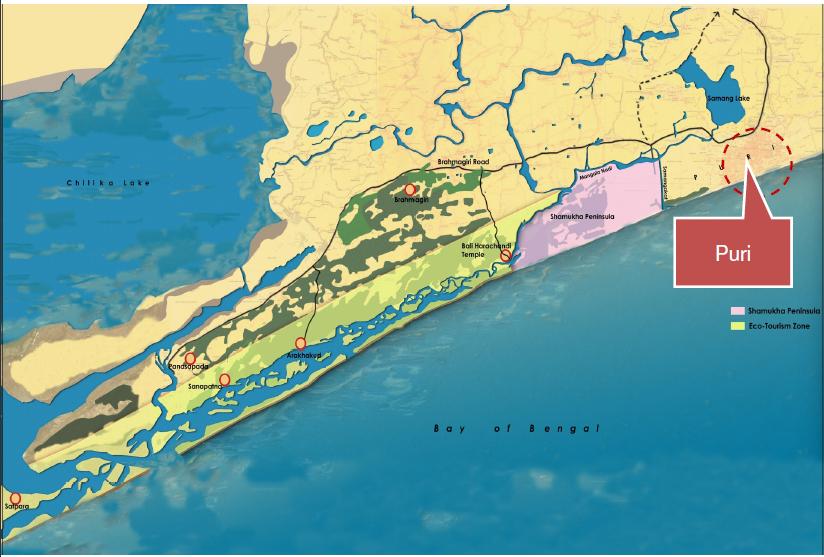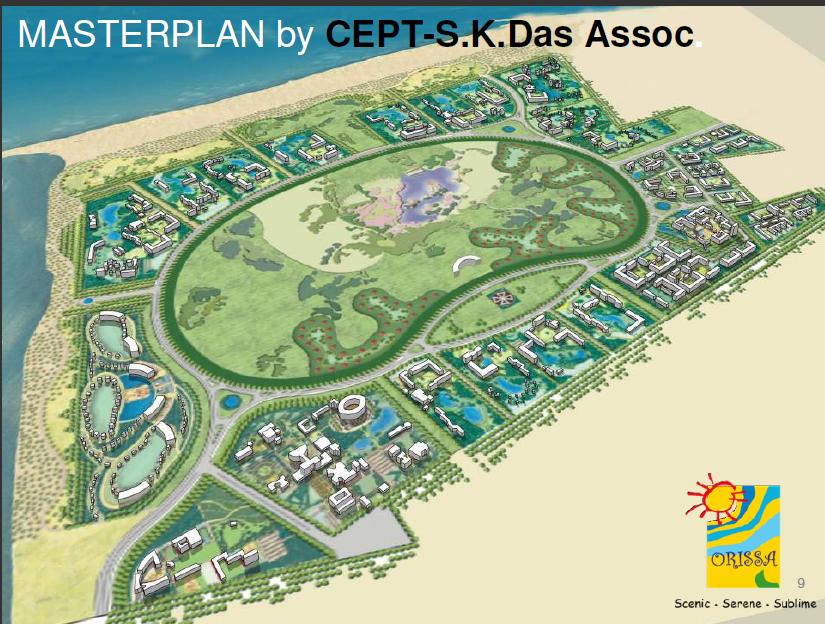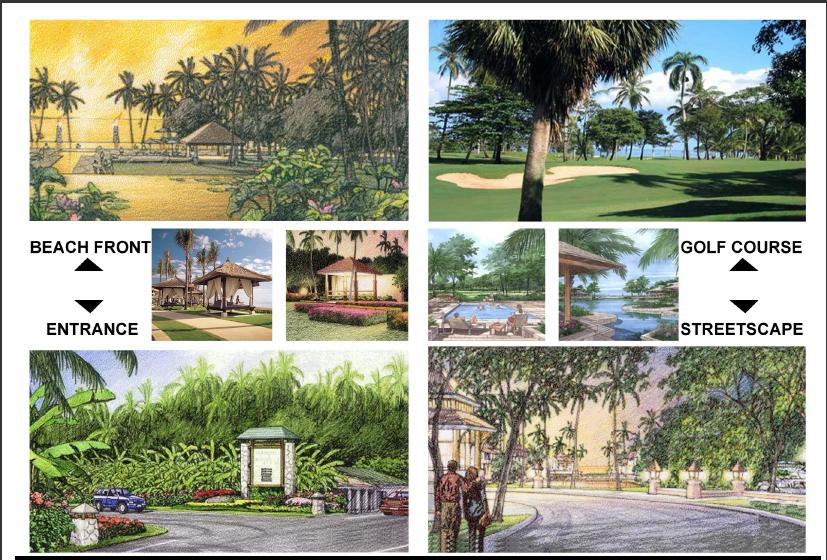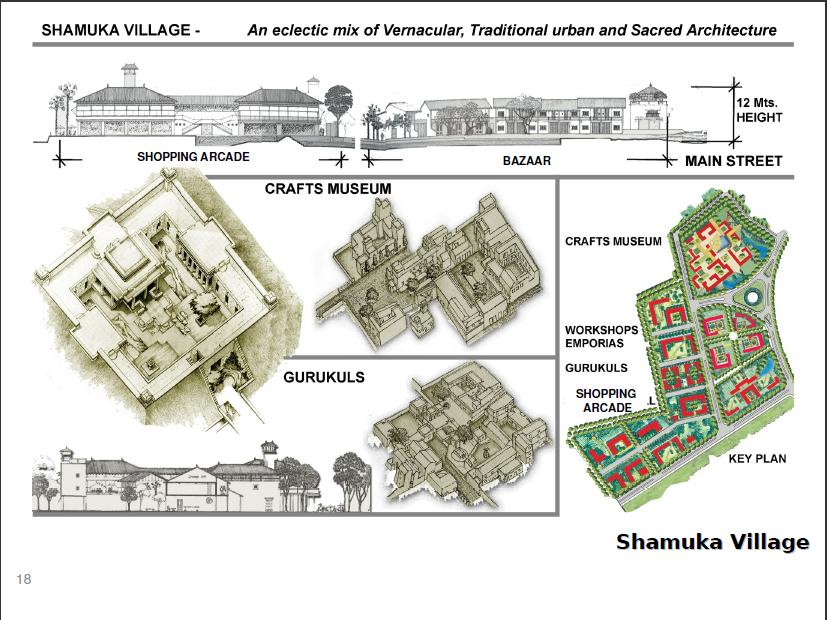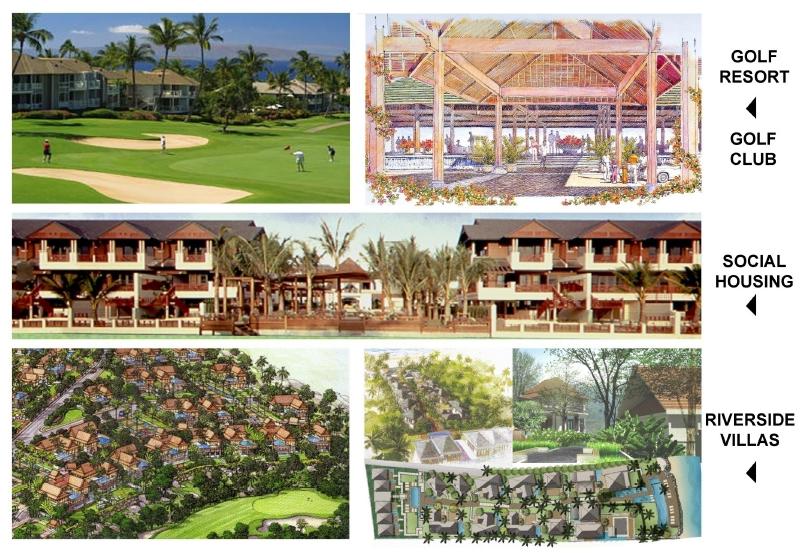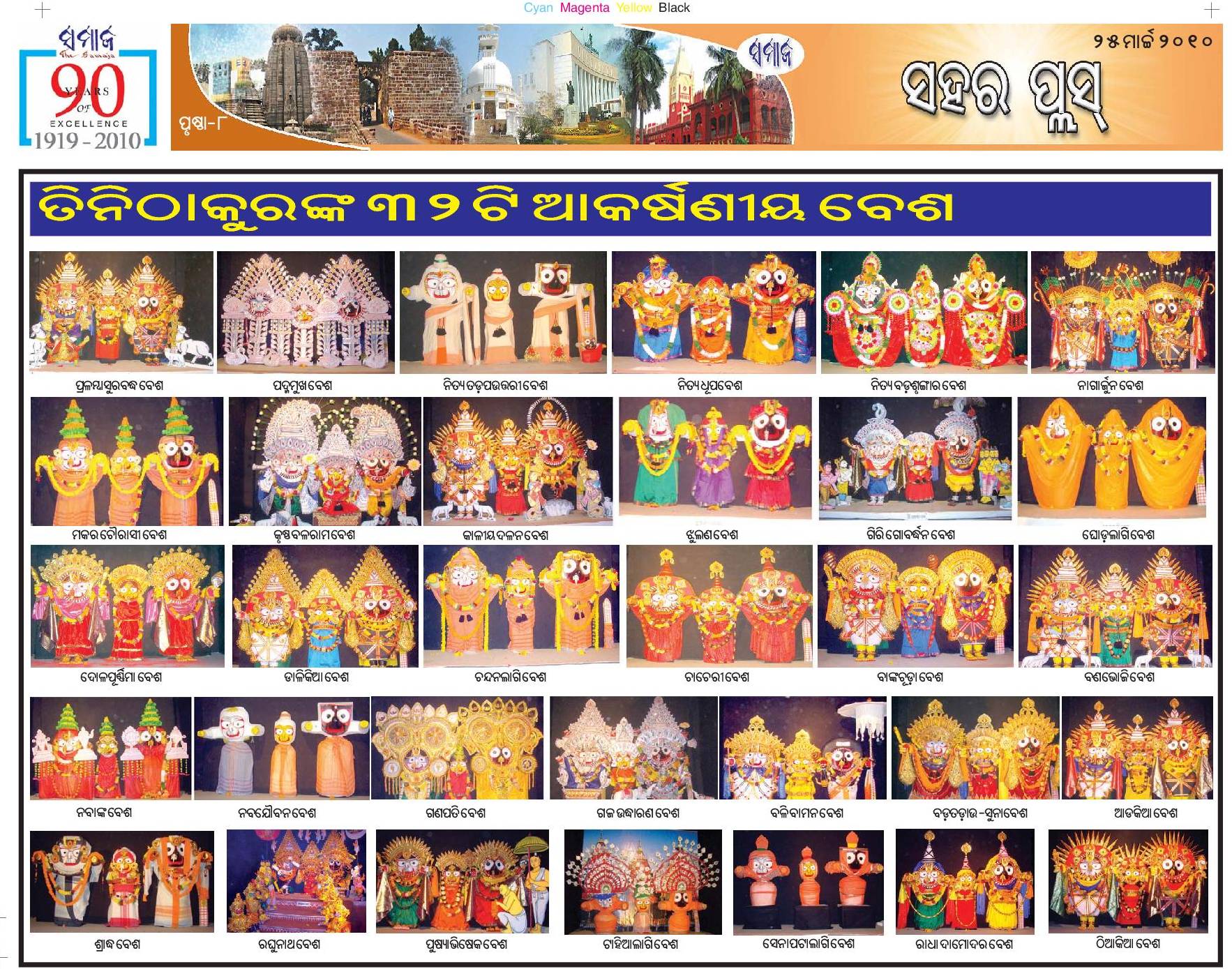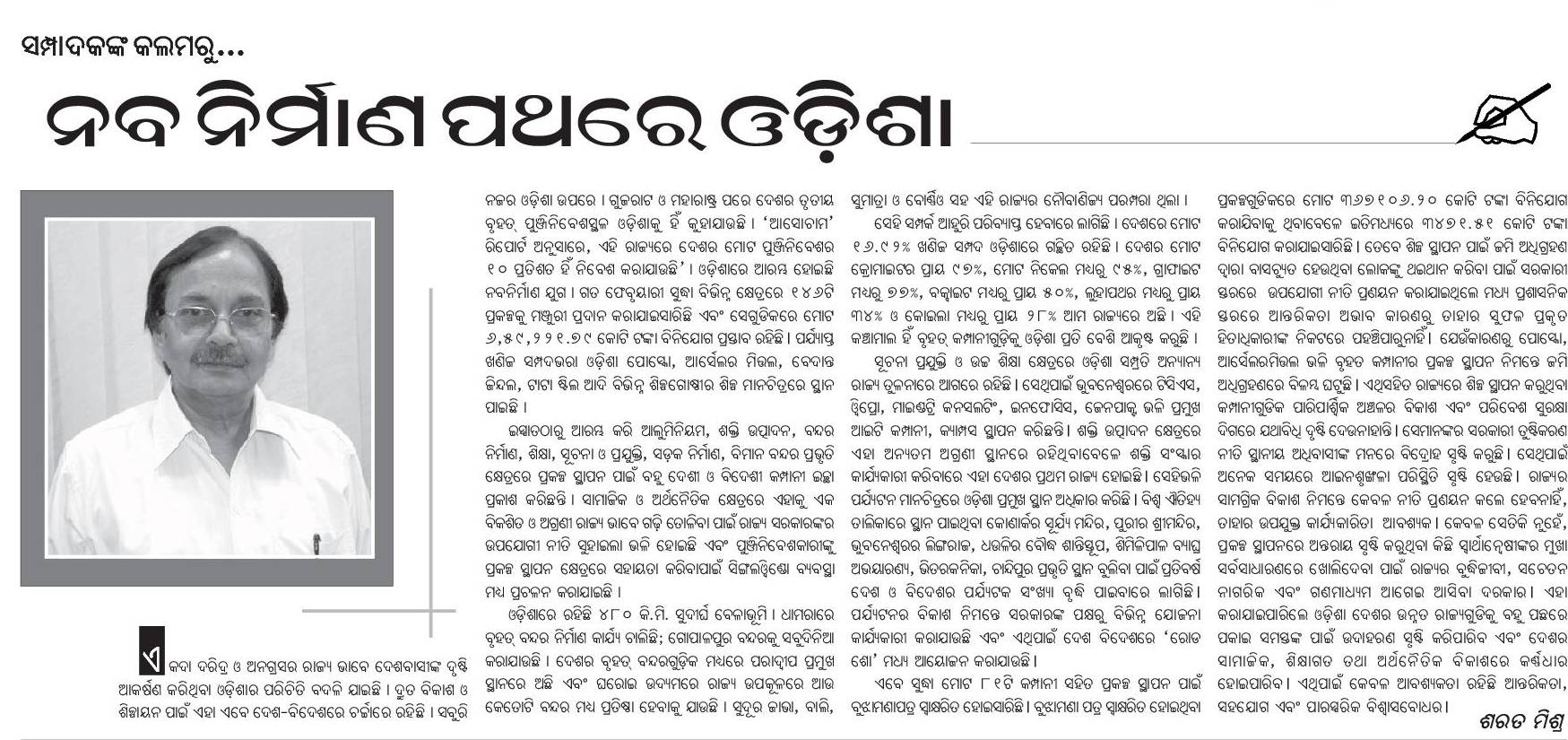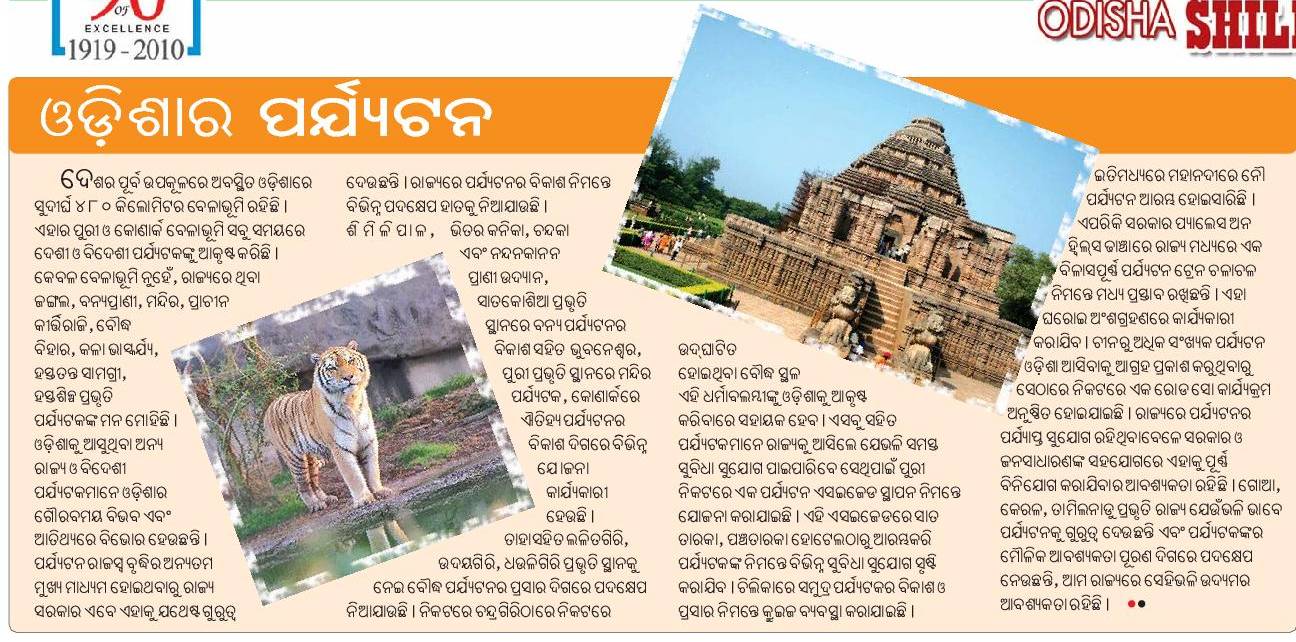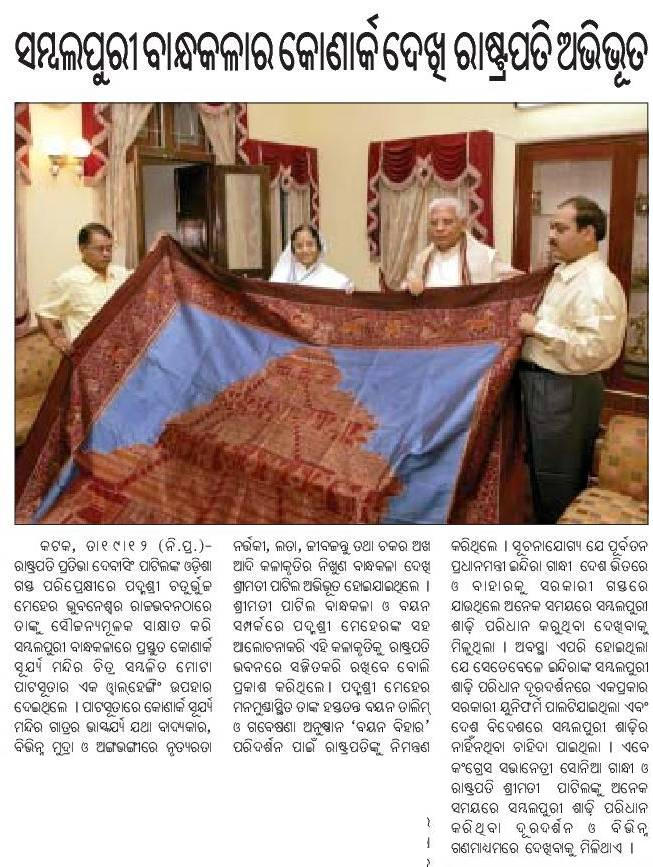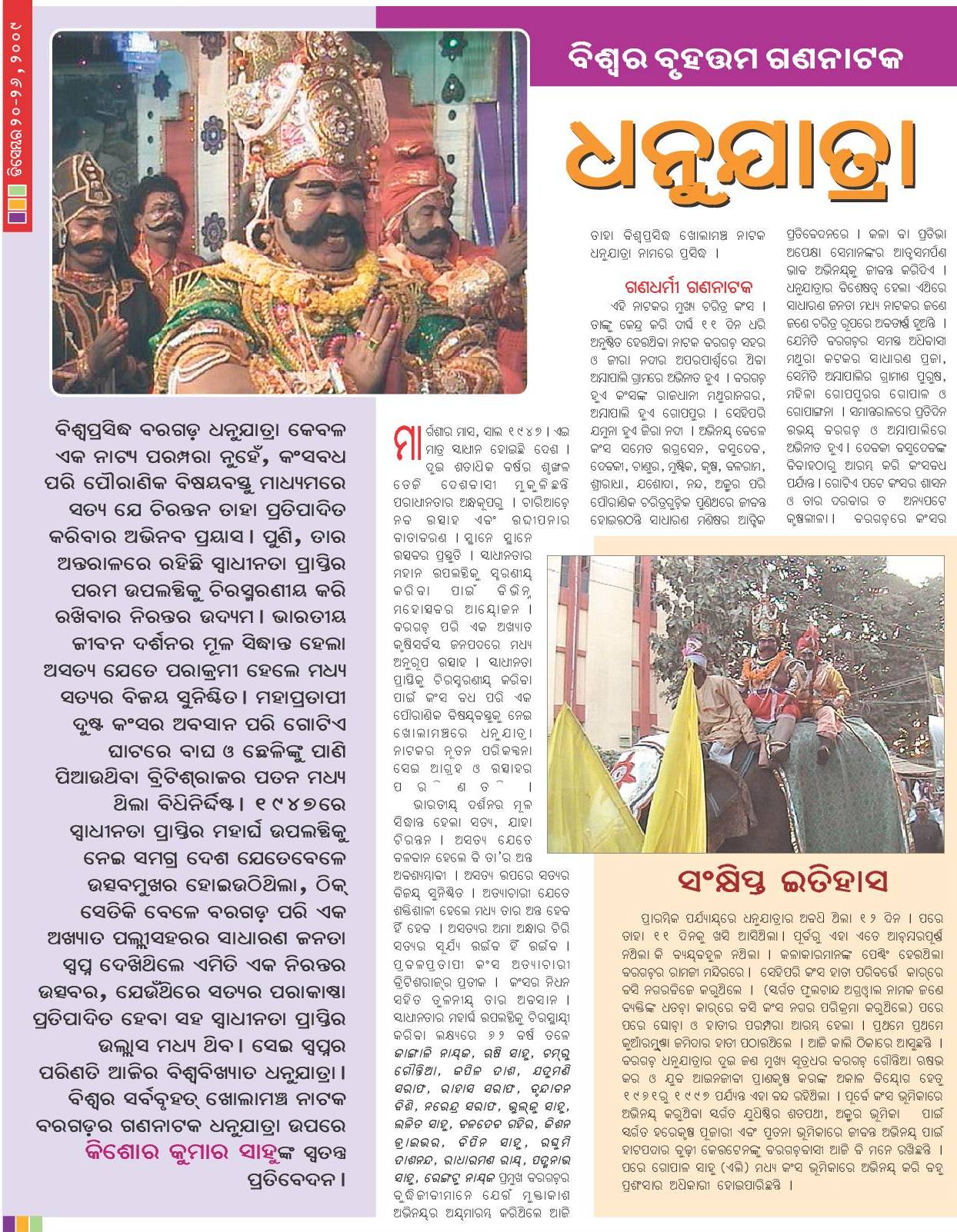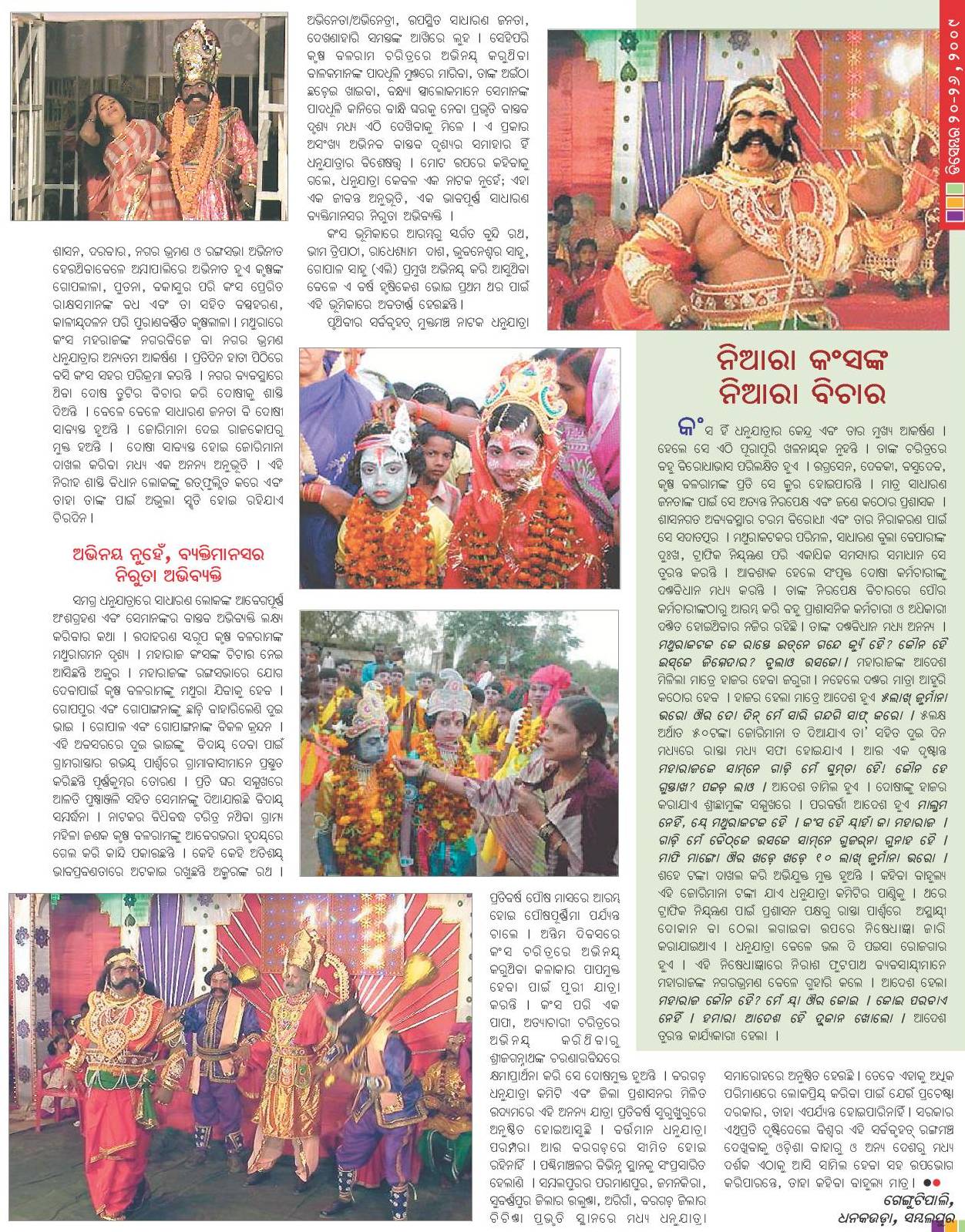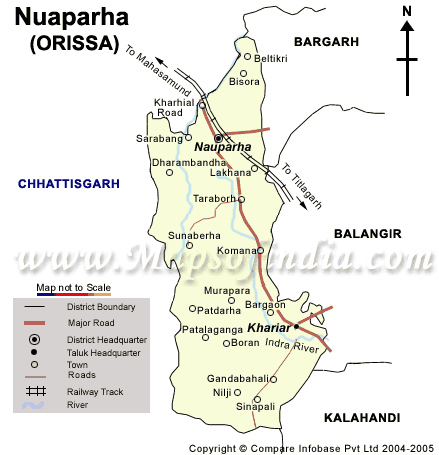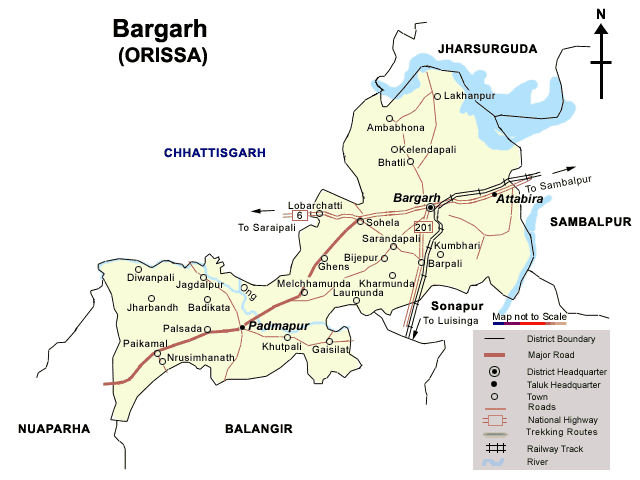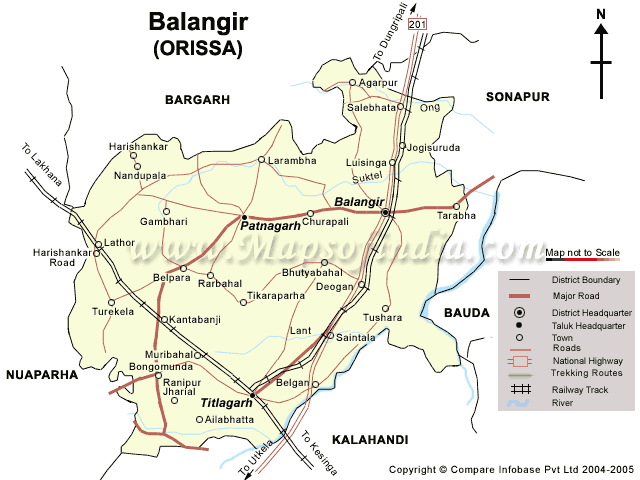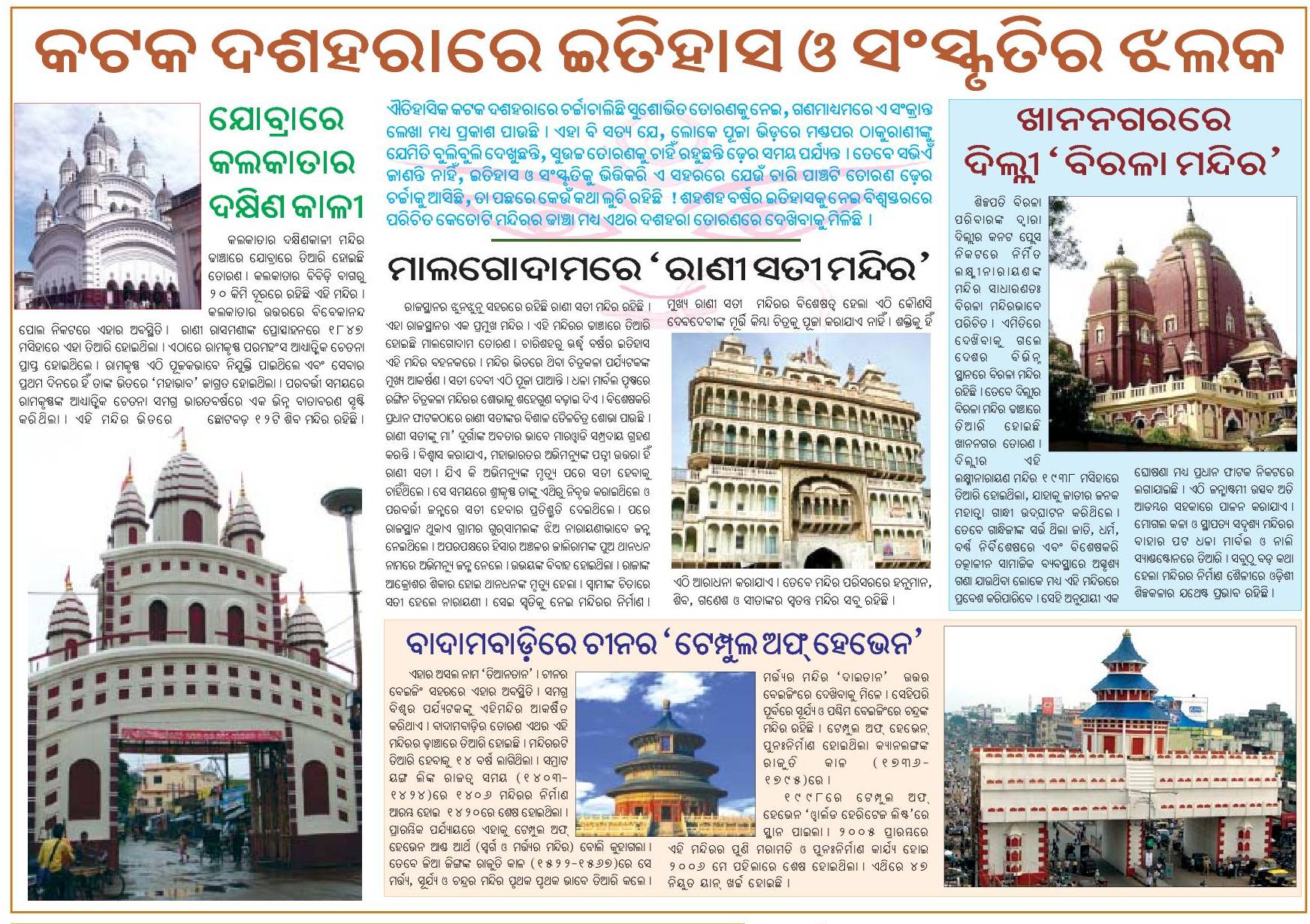There seems to be at least two areas in Orissa named as Gandhamardan; the Gandhamardan hills of Baragarh and Balangir districts and the Gandhamardan peak of Keonjhar. Recently tathya.in wrote about an appeal by Dr. Sanjib Karmee about the Gandhamardan hills of Bragarh-Balangir. The well researched appeal prompted me to do some more research and based on that I suggest that the Government of Orissa push the Government of India to declare the whole of Gandhamardan Hill as a national botanical heritage and reserve and create several research centers on ayurveda, medicine, pharmacy, forestry, just outside of that area.
Following are some excerpts from old news about Gandhamardan hill in Bragarh-Balangir.
1. Excerpts from a June 17, 2008 article in Business Standard:
When Balco tried to obtain a mining lease for Gandamardhan 22 years ago, veteran activists like Anil Agarwal of the Centre for Science and Environment, Sunderlal Bahuguna and the Gandhamardan Yuva Surakshya Sena fought the company tooth and nail. The state government had given in to the activists’ demands then.
… The destruction of local flora and fauna and the disruption of cultural life of the mostly tribal communities in the area are also cited as reasons for opposing these projects.
Another sensitive aspect of the opposition is the religious significance of the hill for both tribal communities in the area and Hindus.
The hill is mentioned in the epic Ramayana. According to legend, the mythological Hanuman plucked a portion of the hill to heal Lakshmana during the battles in Lanka.
The two sides of the slopes also have ancient temples that are significant to local faiths — the Nrusingha Nath temple on the Bargarh side of the hill and the Harshankar temple on the Balangir side.
The hill is rich in herbal wealth and ayurveda colleges are situated on both sides, said environment activist in Orissa, Ranjan Panda.
2. February 24, 2007 ANI article in webindia123.com:
In a novel initiative, the Orissa Government has commenced a project to promote medicinal plantation at Gandhamardan Hills in Bolangir District.
Besides, the project also aims at uplifting the tribals’ life, residing in the hills’ vicinity, which are famous for their natural scenic panorama of rivulets and medicinal plants. ccording to the Divisional Forest Officer of the range, the tribes are now earning much more than before as the society purifies the minor forest produce and after proper packing, sell them in the market.
"This project was launched with the help of the Centre and the State Government. About 1.83 crores have been used for five years and this is the third year of the project. The main aim of the project is to preserve propagate and conserve the rich bio-diversity of the Gandhamardan Hills. Side by side this project has also improved the economic condition of the villagers who are dependent on the forest," said Sarat Mohanaty, Divisional Forest Officer (DFO), Gandhamardan Range iof Bolangir.
The greenery of Gandhamardan Hills overlaps Bolangir and Bargarh Districts, covering an area of nearly 18,629 hectares of reserved forest of land. Around 6512 hectares of this land falls under Bolangir District alone.
Earlier, ignorant about the actual worth of medicinal plants here, the tribals, living in Gandharmardan range, 80 kilometres from Bolangir District, used to be lured by middlemen, who purchased raw seeds, leaves and fruits of these medicinal herbs.
All these years, the species of these plants were exploited with no proper care and most of them had reached the stage of extinction.
Realising the danger posed by such disturbing trends, the Centre and State governments proposed a plan to protect these medicinal plants as well as raise the quality of tribals’ life. And later, the Vanaspati Vana project was set up by the Vanaspati Vana Society.
Under this project, ten villages have been identified and local committees in each village have been formed.
"With the help of the government, a Vanaspati Vana project has been set up in the Gandhamardan Hills range in Bolangir District. Ten villages near the Gandhamardan Hills have been earmarked in as the local chapters of Vanaspati Vana Society to look after the project," said Rajkumar Bhoi, President of the Vanaspati Vana Society.
According to villagers, since the formation of this Society, they have been earning enough to feed their family and are happy about the working of the society.
"After the formation of Vanaspati Vana project, the forest is being safe and also Gandhamardan. The medical plants, which were being neglected and wasted in the past, are being taken care of. Earlier, many fruits grown in the forest, were being bought by local businessmen from tribals at very cheap rates. After formation of Vanaspati Society the prices are set up and we sell accordingly. Seeing our success, Tribals from other villages are selling now their produce to get better prices," said Thabira Meher, a villager.
The tribals are protecting the forBesiest and are also collecting the minor forest produce and different roots of the medical plants, which are useful for medicine and can be sold at a good price. (ANI)
3. A headline in the Knowledge for development site (undated):
The Govt. of Orissa has banned mining along the Gandhamardan Hills through an ordinance in the state assembly today.
4. An article in Navratna News Jan-Feb 2008 by Netrabandhu Pradhan. Following are some excerpts:
the Gandhamardana has always attracted scientists interested in the study of plants. Even when the are was inaccessible, British Scientists and Botanists H.H. Haynes (1921-25) had identified several species of plants in this area. After 25 years i.e. in 1950 Herbert Muni visited this place and located 17 new species of plants. Later on renowned Oriya Botanist and Scientist of the Botanical Survery of India Dr. Gopinath Panigrahi (1963) published research paper on 125 species of precious medicinal plants available in the Gandhamardan. His paper was based on an extensive study made by him in this area. Realizing the rich potentiality of the area for containing more varieties of medicinal plants, Dr. Gopinath Panighrhi re-visited the place once again in 1964 along with a group of his associates who collected 300 varieties of species and herbs available in this area and prepared a catalogue on the basis of it. In 1990 M.Brahmam and Hari Om Saxena surveyed on the plants of Gandhamardan and identified 200 species of plants out of which the usefulness of 77 species of plants in the treatment of common ailments were highlighted. Again, in 1995 Saxena and Brahmam surveyed in the area of Gandhamardan and enlisted 781 plants species available there. R.C. Mishra (1990,1994,1996) worked in this mountain range and illustrated 920 species of plants. In the year 1994 P. Bilung, P.N. Pradhan and R.N. Pradhan Dept. of Botany, Panchayat College, Bargarh have surveyed the area and report the use of local Mahura plants from Aracei family. In 1999 N.B. Pradhan, R.N. Pradhan, P.Sahu and S.K. Sen made a detailed survey of the area and highlighted on many rare medicinal plants have shown concern about the decreasing population of these plants. The Vesaja Samity of Nrusinghnath, Padampur has been educating people on the plants and herbs available in Gandhamardan since 1994 and also organizing the Baidyas of the district of Bargarh and helping them in the proper identification of the medicinal plants. Sri Sri Nrusinghnath Ayurvedic Collegeand Research Institute in collaboration with the Department of Botany, Panchayat College, Bargarh have undertaken a Joint Venture in making a detailed survey of the area, identification and cataloguing of the plants and preparation of ‘herboriams’. In the recent past a Banaspati Bana Prakalpa ( 2003 ) has been launched by the Department of Forest and Environment, Govt. of Orissa, with assistance from the Govt. of India. The Project is making rapid strides under the supervisions of the Divisional Forest Officers of Bargarh and Bolangir Range. It is hoped that with the successful implementation of the project, it would contribute a lot in the protection, preservation and expansion of the plants.
Many survey works have been undertaken under the supervision of both the Department of Forest and the SSN Ayurvedic College, Nrusinghnath. One of the reports reveals that there is rapid deforestation in this area. These plants which were easily available in the post have become rare. Gandhamardan range of mountain that extended upto 1800 sq. k.m. was fully of dense forest and was replete with herbs and medicinal plants. But out of them several species have become rare. These include Barun, Kochila, Manjusha, Panki, Paldhua, Sunamukhi, Tamul, Bal Harida, Bhumi Kusmanda etc. Growing deforestation of Amla, Kuturi, Gudmari, Chhatiana, Meda, Bidanga is still underway. But all is not lost. There is still hope that as even now also one can find in the scrub forest living stumps of different species of plants. It is hoped that if the free entry of human intruders and the movement of stray cattles are prevented, green plants will again raise their heads covering the surface of the rock and the jungle will get back its lost luster and greenery.
… Gandhamardan range of Mountain is not only well known in the two districts of Orissa, but they are the objects of glory and pride for the entire state of Orissa and the neighboring Chhatisgarh. It has a rich tradition of its own. The rare Ayurvedic material Medical and valuable forest products once collected from these forests heave now become in obtainable. Deforestation in the area has assumed alarming proportion. If we still neglect its preservation, it will turn into a wasteland and will get extinct for ever and in such an event its dangerous consequences cannot be imagined. Yet it is never too late. Even today the Gandhamardan has not lost its glory. It is still possessing most of its materials within. If man undertakes fruitful ventures and stops behaving like a savage, it will again emerge as an impenetrable dense forest in its full glory.
5. A research paper in Bangladesh Journal of Plant Taxonomy titled "An assessment of floristic Diversity of Gandhamardan hill range, Orissa, India.
Abstract: The plant resources of Gandhamardan hill range were studied and analysed. A total of 912 vascular species belonging to 556 genera under 142 families were recorded. Herbs dominate the flora followed by trees, climbers and shrubs. Dominance of phanerophytes indicates the tropical moist and humid climate. Proper conservation and management plans are needed to save the natural resources, especially medicinal plants, of this sacred hill range.
…
Gandhamardan hill range is such a tropical moist deciduous system in Orissa, India. Due to diversified topography with twenty-two perennial streams, the hill range having most congenial environment for the luxuriant growth of plant resources. These resources are under severe threat due to over-exploitation by the local people for collection of firewood, fodder and medicinal plants and heavy incidence of grazing. Some sporadic works on floristic and ethnobotanical studies were carried out earlier (Raju, 1960; Panigrahi et al., 1964; Brahmam and Saxena, 1990a, b; Mishra et al., 1994, 2001; Misra and Behera, 1998; Mishra and Das, 2003; Misra, 2004). But, this floristically rich hill range with varied terrain conditions and environmental factors along with its phytogeographical position was not explored well in the past. The present study is, therefore, the first attempt to make an inventory and analysis of the entire flora of Gandhamardan hill range based on copious field observations, available literature and herbarium data, with a view to contribute to the overall knowledge of Gandhamardan flora and to the management of this sacred hill range.
…
Floristic composition: The floristic composition of the hill is remarkable in its diversity and luxuriance. Altogether, 912 vascular plant taxa pertaining to 142 families and 556 genera were collected. The dicotyledonous plants belonged to 106 families, 418 genera and 685 species, and the monocotyledonous plants to 21 families, 122 genera and 206 species. Pteridophytes were represented by 21 species belonging to 15 families and 16 genera. Analysis of flora shows a comparatively higher representation of herbaceous species (519) followed by 173 trees, 119 climbers and 101 shrubs. In comparison with the Orissa flora (total area 155,707 sq km) consisting of 2727 species (Saxena and Brahmam, 1996), 33.4% of species were recorded in the present study area. The recorded genera of the Gandhamardan flora were 52.4% of the Orissa flora, whereas the families covered 62.3%. A total number of 776 indigenous wild species, 64 introduced wild species and 72 cultivated species were found in the area. The species to genera ratio was 2.6 in Orissa flora, whereas it was 1.6 in the present study. The ratio of genera and family in the Gandhamardan flora was 3.9, whereas the value of the Orissa flora was 4.7. This indicates higher taxonomic diversity of the study area. Pielou (1975) and Magurran (1988) pointed out that, in intuitive terms, hierarchical (taxonomic) diversity will be higher in an area in which the species are divided amongst many genera as opposed to one in which most species belong to the same genus, and still higher as these genera are divided amongst many families as opposed to a few.
Exactly 50% of the recorded taxa belonged to only 13 species-rich families. The largest families in terms of number of species were Poaceae (90), Papilionaceae (68), Euphorbiaceae (45), Rubiaceae (41), Asteraceae (36), Cyperaceae (35), Acanthaceae (30), Caesalpiniaceae (20), Schrophulariaceae and Apocynaceae (each with 19 species). A total of 15 species of orchids belonging to 10 genera were also recorded. At genus level, Ficus showed the maximum diversity with 14 species. This was followed by Cyperus (11), Cassia (9), Blumea (8), Bauhinia, Grewia, Hedyotis, Indigofera (each with 7 species), Acacia and Alysicarpus (each with 6 species). Analysis of flora shows that most of the genera (388) are represented by single species and a very few genera are represented by more number of species. Asparagus gonoclados Baker, Corchorus trilocularis L., Enicostema axillare (Lam.) A. Raynal and Triumfetta rotundifolia Lam. were recorded new to the Flora of Orissa. Erythrina resupinata Roxb., Heterostemma tanjorense Wight & Arn. and Tylophora fasciculata Buch-Ham. ex Wight & Arn. are the unique species found in the study area, which are not sighted elsewhere in Orissa. There were 64 invasive exotic species also found, which will be serious threat to the forest ecosystem in the future. Important among them are Ageratum conyzoides L., Chromolaena odorata (L.) R. King & H. Robins., Crotalaria pallida Ait., Hyptis suaveolens (L.) Poit., Lantana camara L., Mimosa pudica L., Parthenium hysterophorus L. and Triumfetta rhomboidea Jacq.
The upper storey of the vegetation was covered by tall trees with epiphytic growth of lichens, bryophytes, ferns and orchids. It was interesting to note that Shorea robusta Gaertn. f., a common species in other parts of Orissa, showed sporadic distribution in the study area. Some of the shrubs e.g., Ardisia solanacea Roxb., Flemingia macrophylla (Willd.) Prain ex Merr., Indigofera cassioides Rottl. ex DC., Leea asiatica (L.) Ridsdale and Morinda citrifolia L., were found to grow in dense and interior forests. The bamboo species Dendrocalamus strictus (Roxb.) Nees. also occupied considerable part of the area. Herbs were mostly distributed all over the hill range, which includes open and dense forests, along the streams, top of the hills with grasses and forest road sides. A good number of lianas and woody climbers were present in the hill range, such as Bauhinia vahli Wight & Arn., Calycopteris floribunda Lam., Combtretum albidum G. Don., Cryptolepis buchanani Roem. & Schult., Entada pursaetha Spreng., Hemidesmus indicus (L.) R. Br., Smilax zeylanica L., Toddalia asiatica (L.) Lam., and Ventilago madraspatana Gaertn. Epiphytes were less in number. Vanda testacea (Lindl.) Reichb. f. and V. tessellata (Roxb.) Hook. ex G. Don. were two common epiphytic orchids found on branches of most tall trees. Four root parasites (Aeginetia indica L., Melasma thompsonii (Hook. f.) Wettst., Sopubia delphiniifolia (L.) G. Don. and Striga angustifolia (D. Don) Saldanha) and two stem parasites (Dendrophthoe falcata (L. f.) Etting and Viscum articulatum Burm. f.) were also recorded from the study area. The extensive flat plateau on the top of the hills running through the whole length of the Gandhamardan range presented a grassland formation with luxuriant growth of various grass species attaining 2-3 m in height. The grassland comprises of Arthraxon lancifolius (Trin.) Hochst., Capillipedium assimile (Steud.) A. Camus., Cymbopogon martini (Roxb.) Wats., Heteropogon contortus (L.) P. Beauv. ex Roem. & Schult. and interspersed with stunted growth of Lagerstroemia parviflora Roxb., Phyllanthus emblica L., Pimpinella heyneana (Wall. ex DC.) Kurz. and Woodfordia fruticosa L. Kurz.. Weeds such as Borreria stricta Roth ex Roem. & Schult., Cleome monophylla L. and Mollugo pentaphylla L. were common. Celosia argentea L. (introduced) is a weed of great nuisance in the abandoned fields near Borasambar, Paikmal and Harishankar.
Medicinal plant exploration: Gandhamardan hill range is also known as ‘Ayurvedic paradise’ and treasure house for potential medicinal plant species not only for Orissa but also for India. More than 300 plant species were found in the area with medicinal properties. These are depleting rapidly because of unsustainable harvesting, lack of awareness, and unrestricted grazing by domestic animals from nearby villages (Panigrahi, 1963; Pattanaik and Reddy, 2007). Nonetheless, many people from far and wide come to this area to collect medicinal plants and share their knowledge on medicinal uses of these plants. Major medicinal plant species, such as Asparagus racemosus Willd., Celastrus paniculata Willd., Chlorophytum arundinaceum Baker, Costus speciosus (Koenig) Sm., Curculigo orchioides Gaertn., Curcuma angustifolia Roxb., Gloriosa superba L., Gymnema sylvestre (Retz.) R. Br. ex Schult., Plumbago zeylanica L., Rubia cordifolia L. and Tinospora cordifolia (Willd.) Hook.f. & Thoms., were harvested in bulk for preparation of medicines by the local people. Unsustainable collection of above medicinal plants has placed them in threatened and vulnerable categories in Conservation Assessment and Management Plan (CAMP) of Orissa.
Conservation measures: In the prevailing situation, conservation of plant resources is very important, as many of these plants, for example Asparagus gonoclados and Enicostema littorale Blume, have been reduced to a greater extent. Therefore, sustainable utilization of medicinal plants is an urgent demand of the hour. Sustainable wild collection with fair trade would help to conserve the natural resources of the Gandhamardan hill range. Piloting of farmer-based cultivation trials for a selected number of threatened and indigenous medicinal plant species on the edges of forests and in home gardens should be encouraged. The state Forest Department should initiate in situ as well as ex situ conservation practices by promoting nurseries, home garden andplantation. The state government should promote Village Management Committee (VMC) and Conservation Area Management Committee (CAMC) to protect the forests from denudation. Community mobilization and creating awareness on sustainable harvesting of plant parts among the local people of the surrounding villages must be done at priority level. The local non-government organisations (NGOs) should promote participatory research in breeding and participatory knowledge management involving scientists, government officials and tribal families. The Forest and Environment Department should establish linkages with markets, so that the cultivation of medicinal plants becomes market-driven, with assured income security for tribal families. Unrestricted movement of pilgrims all around the adjoining forest areas near to the temple are causing loss of plant species. It is necessary to improve the socio-economic conditions of people living around the hills to minimize the anthropogenic activities in order to prevent depletion of natural resources of this sacred hill range.
